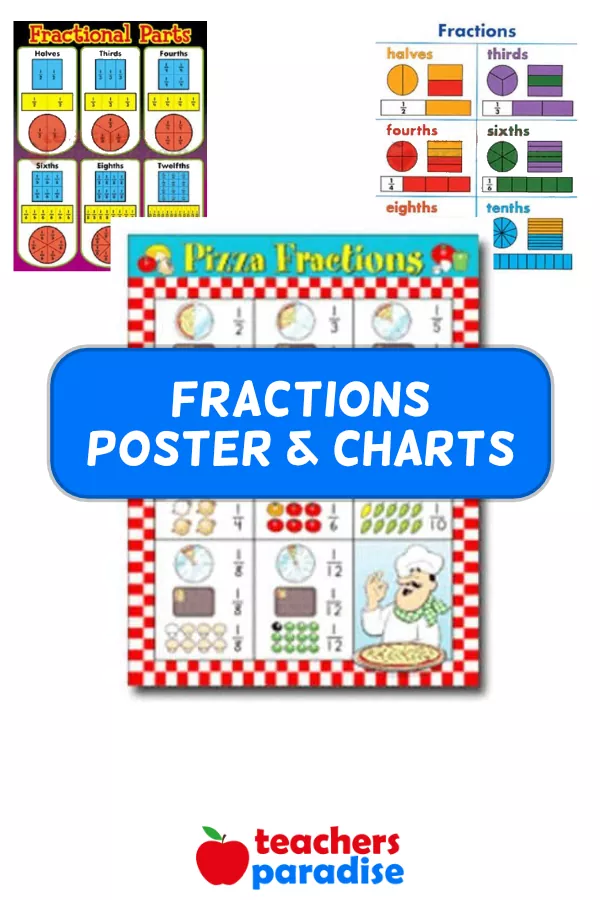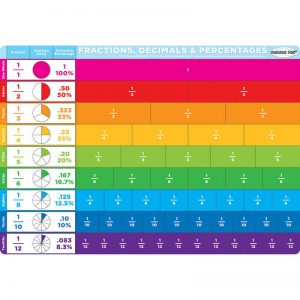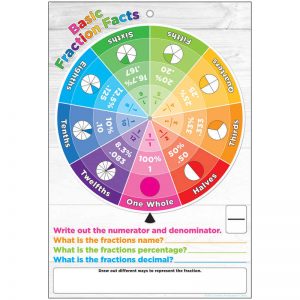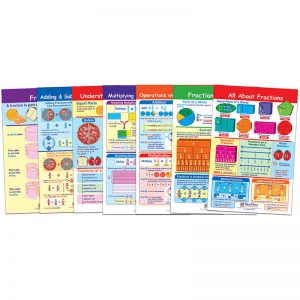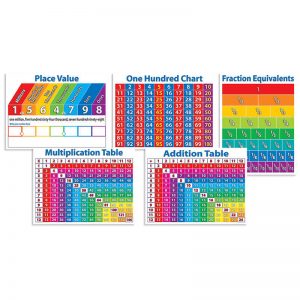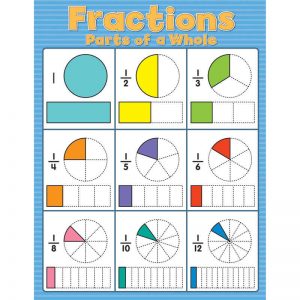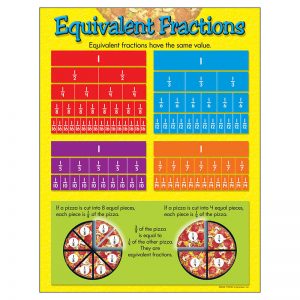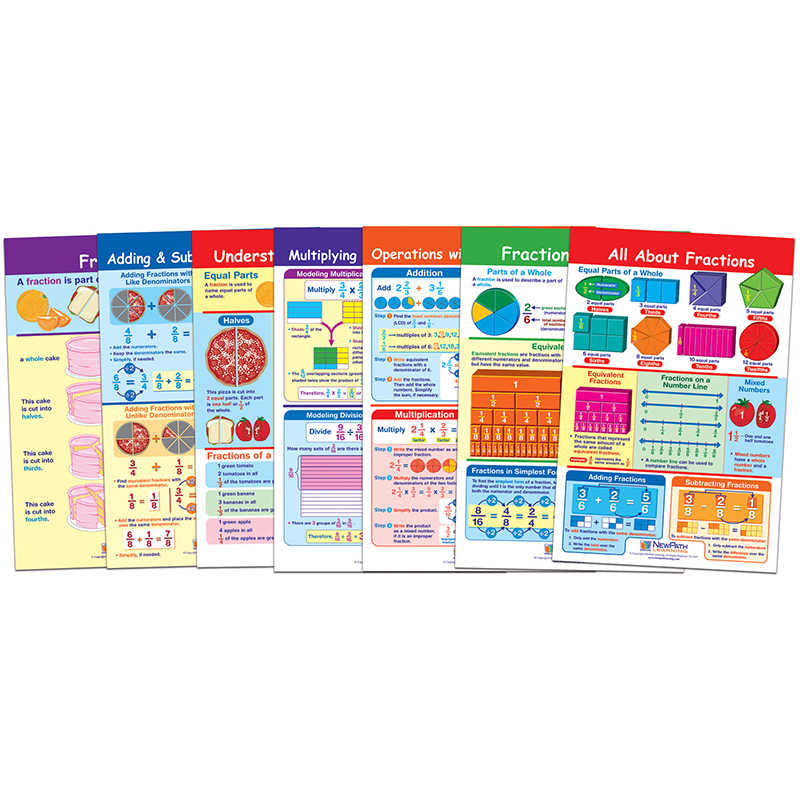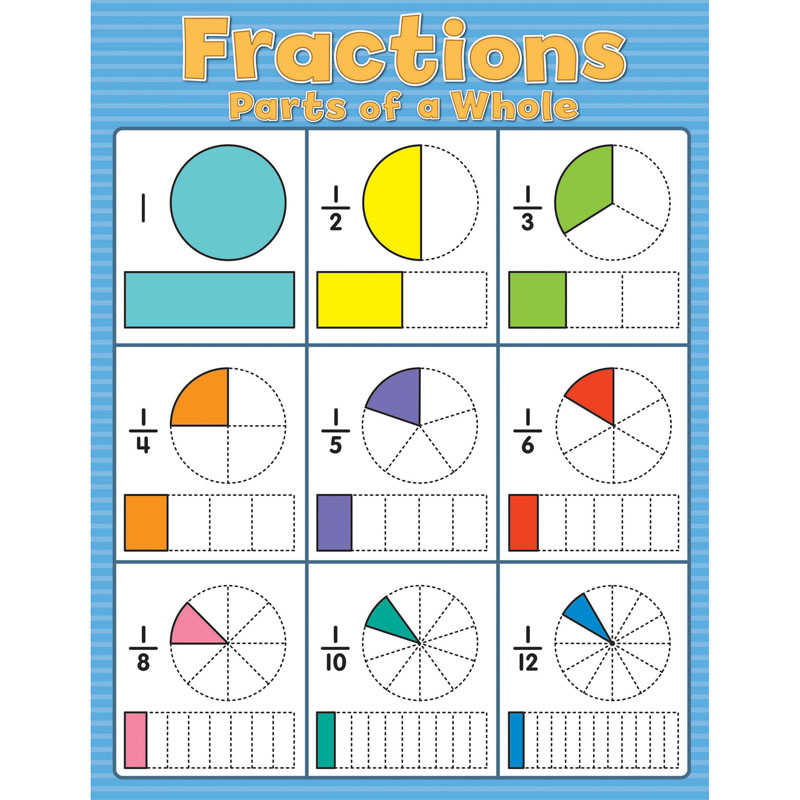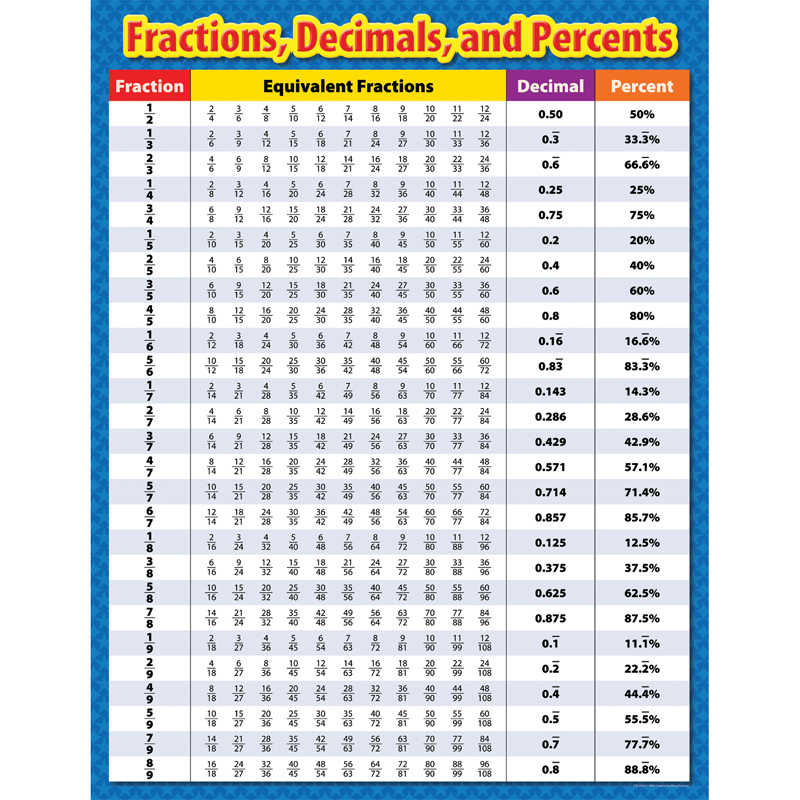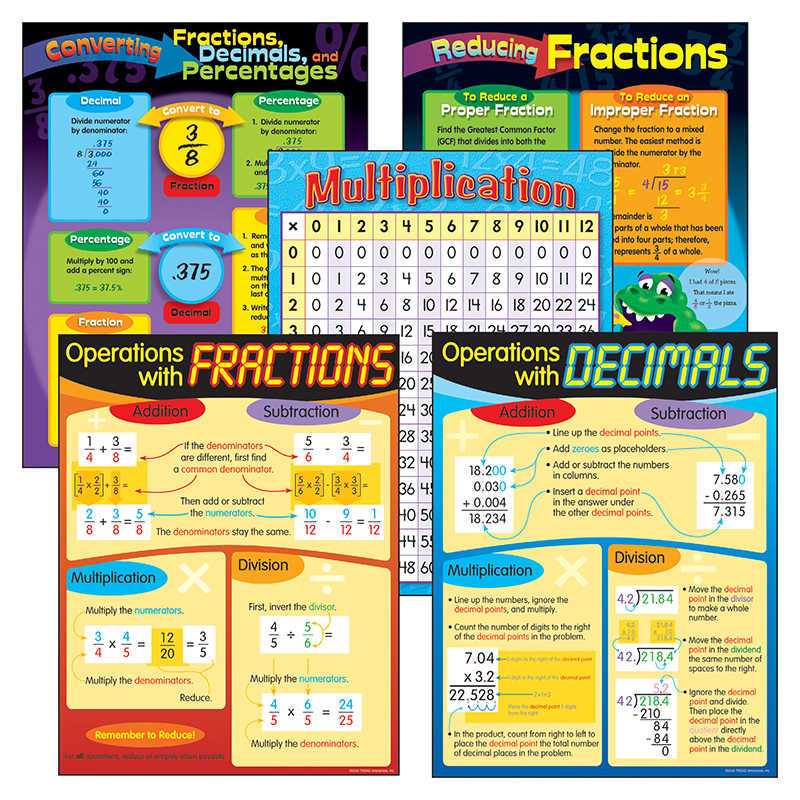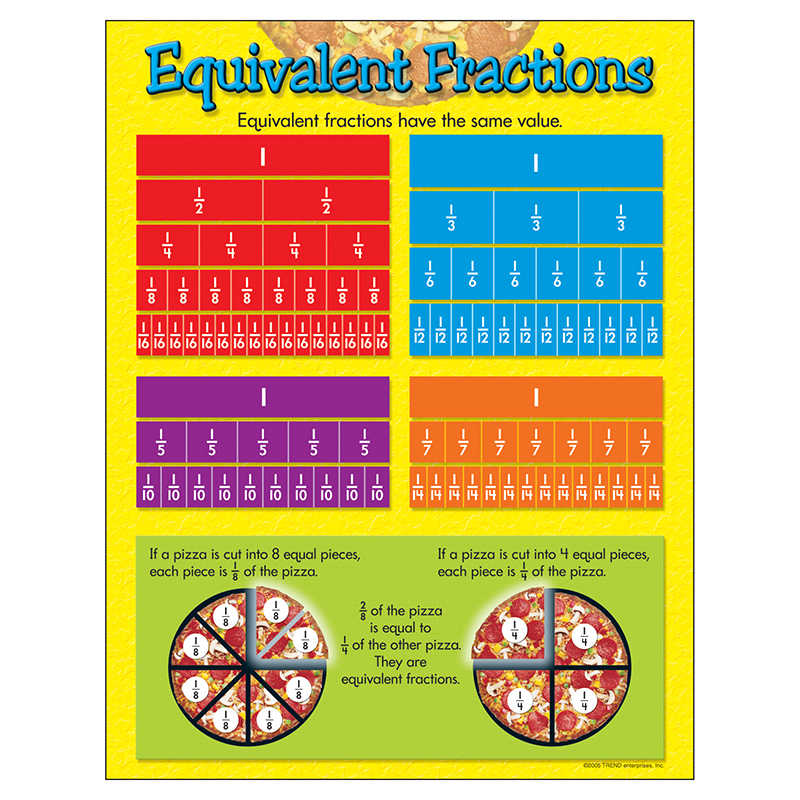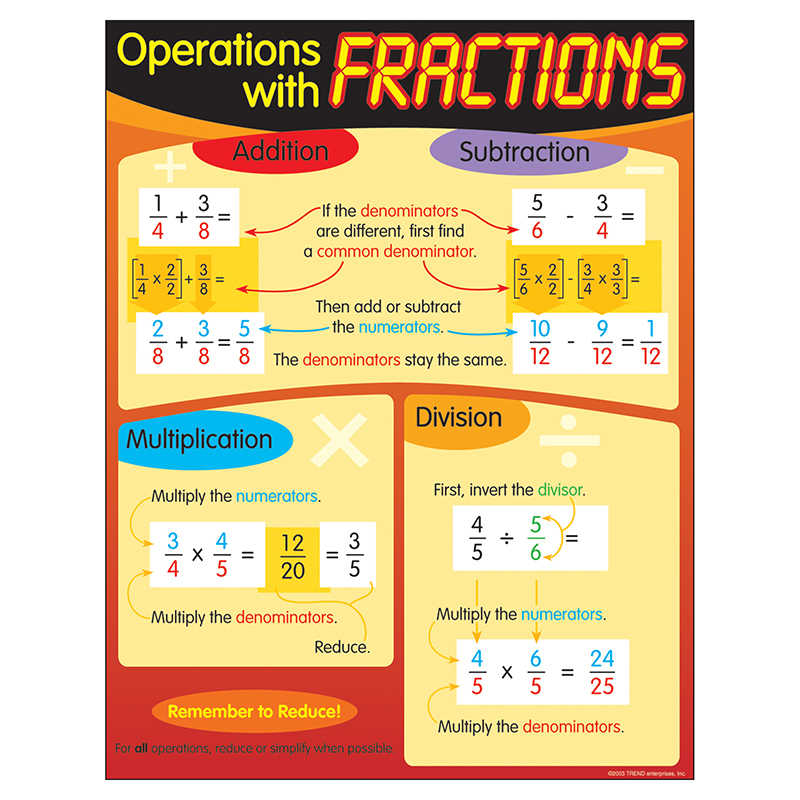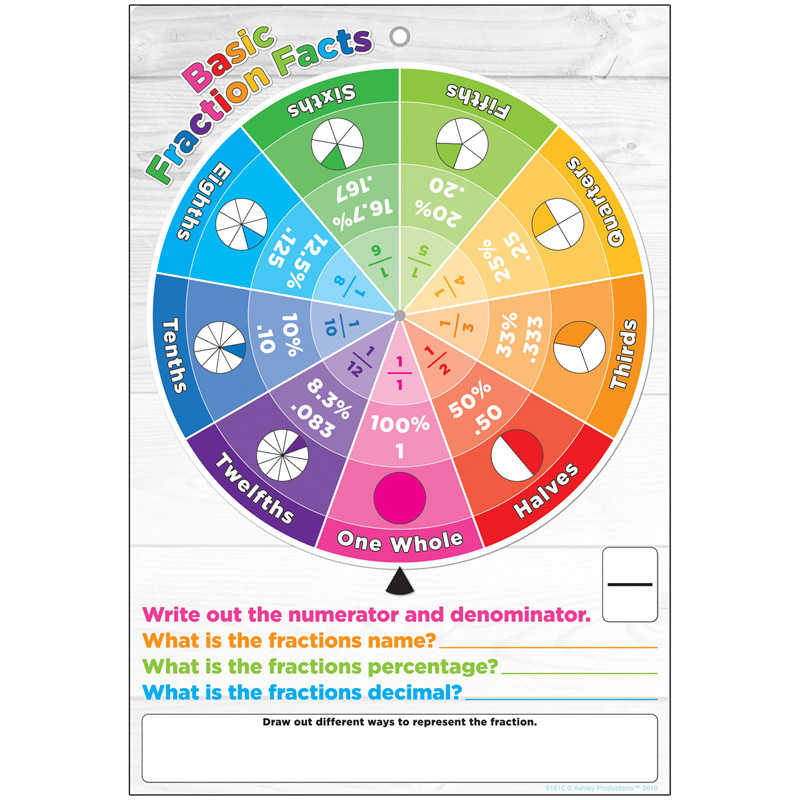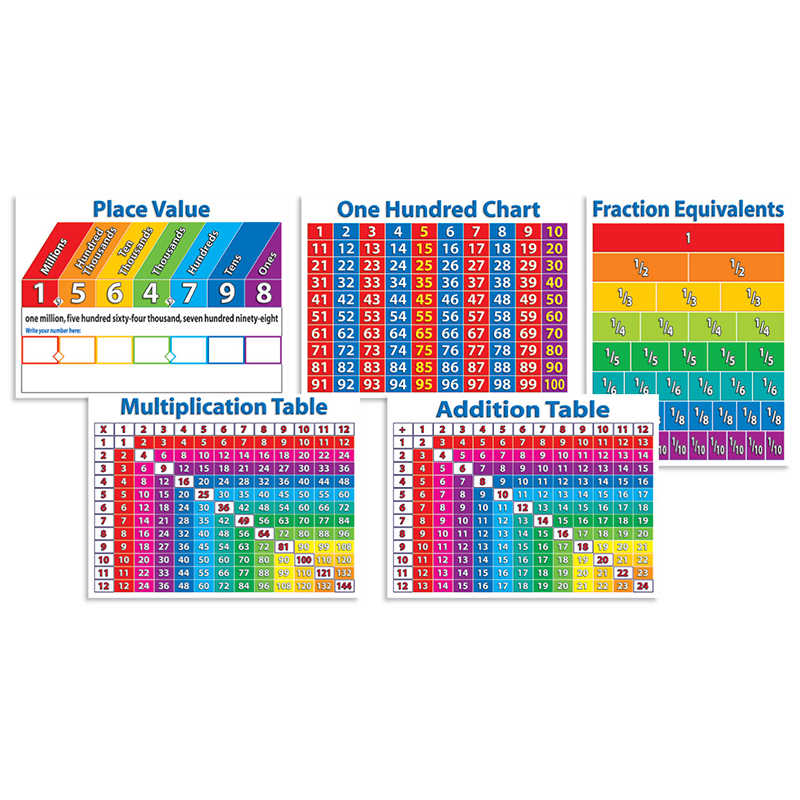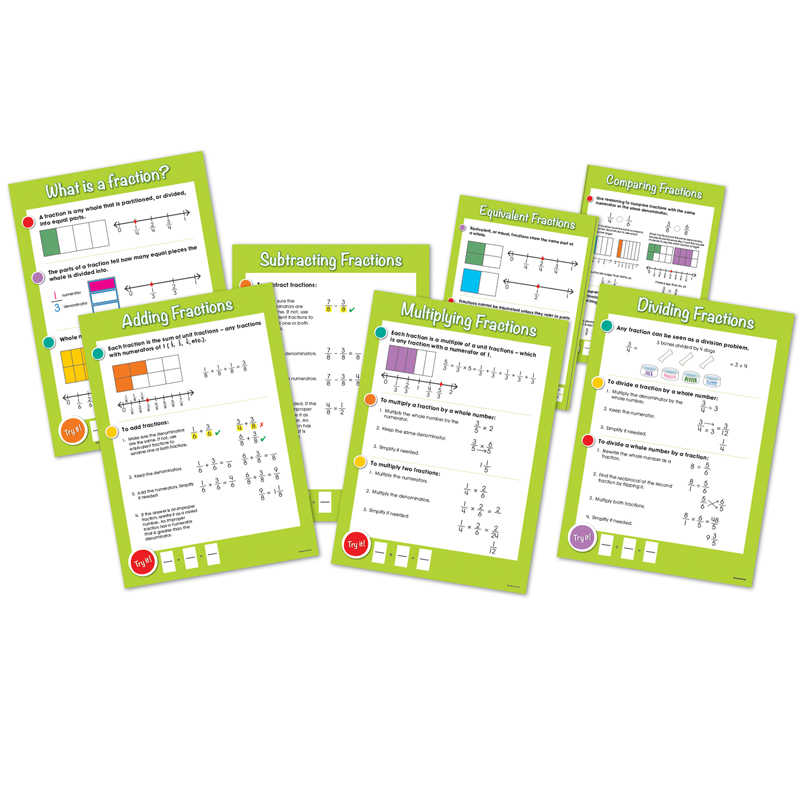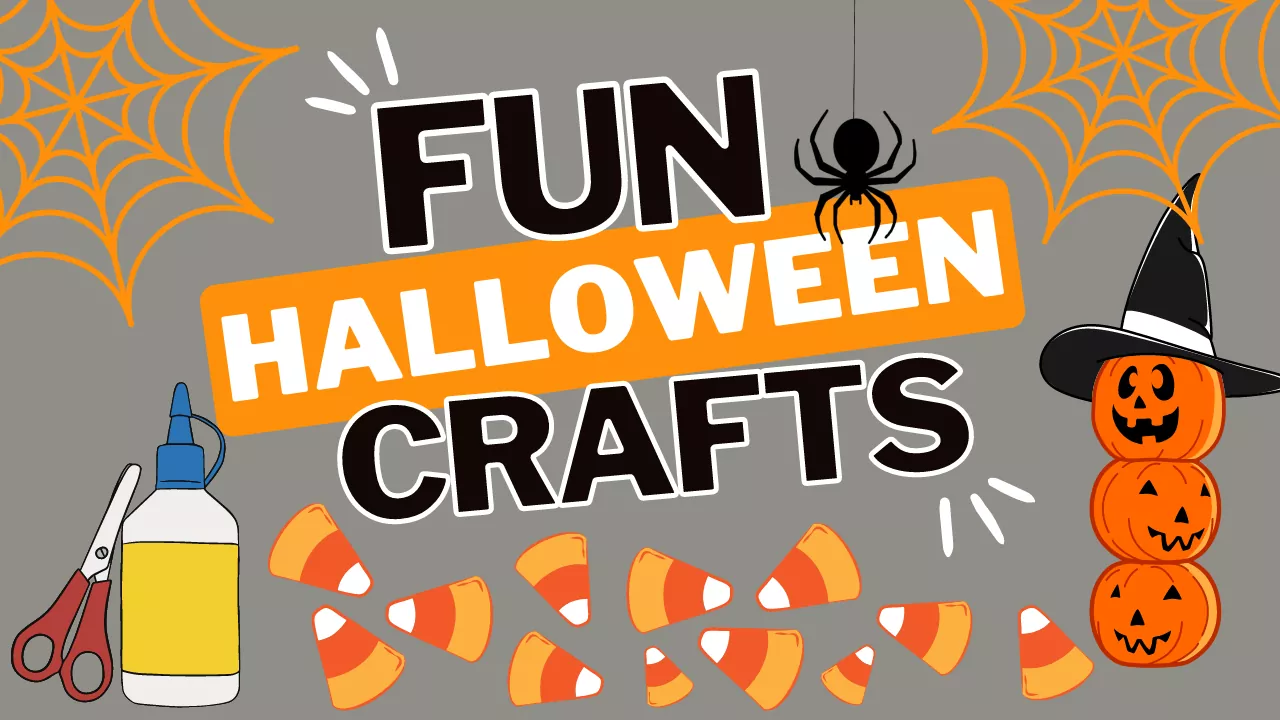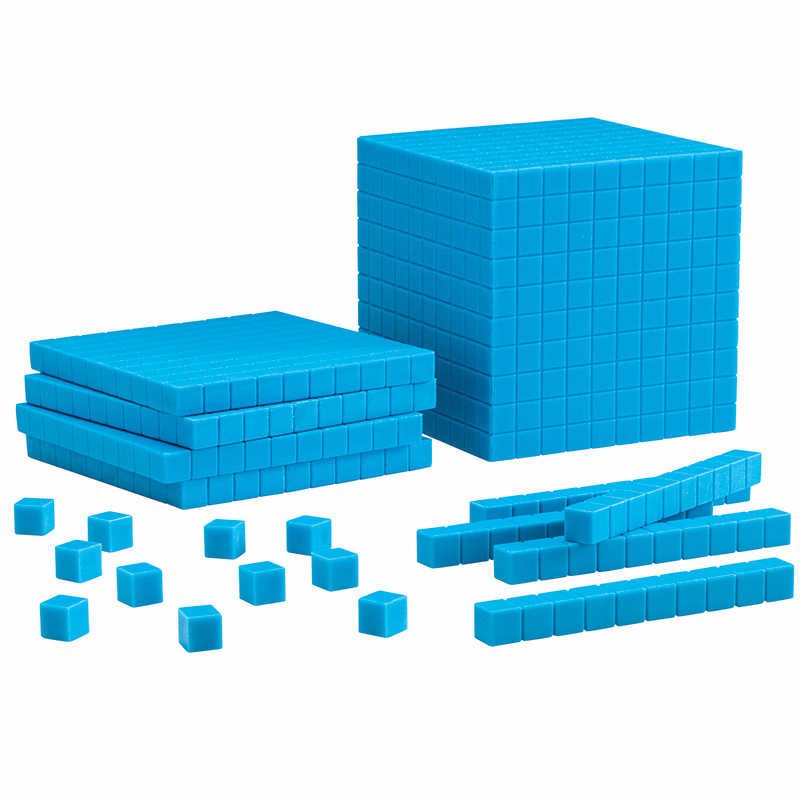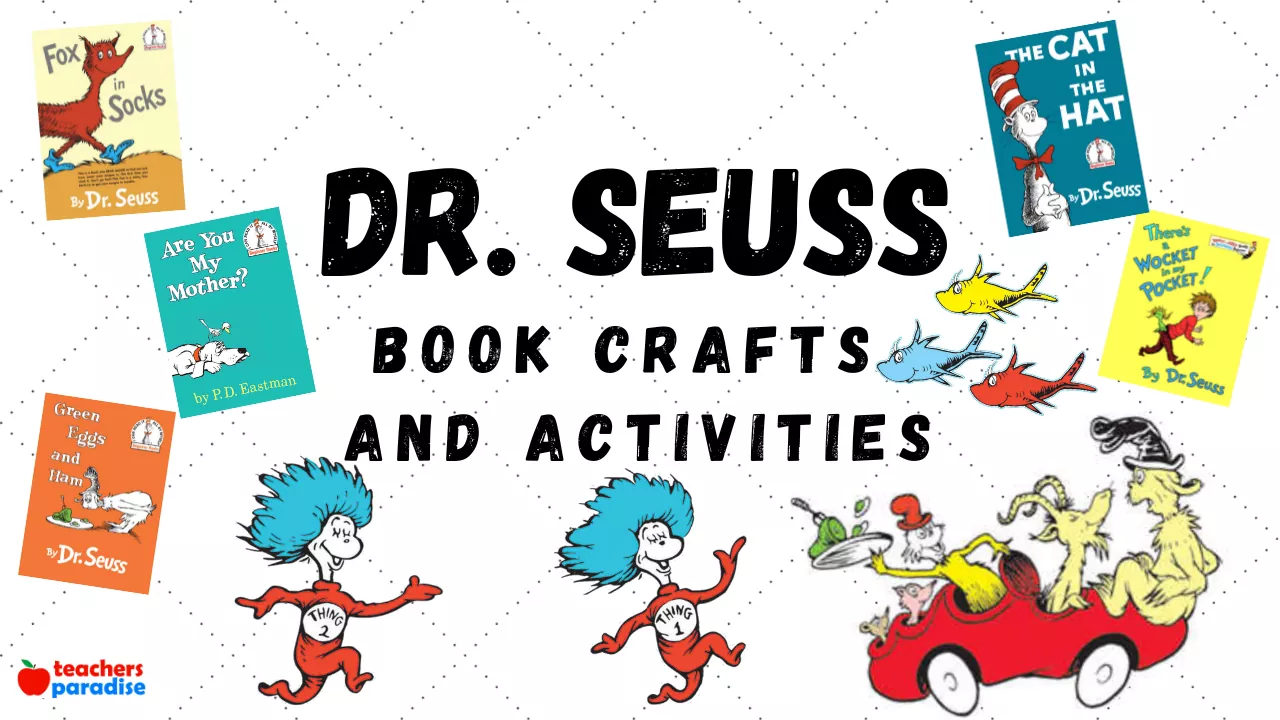A fractions poster and chart can be valuable tools for teachers to help teach students about fractions in the classroom. It provides a visual representation of fractions and can aid in understanding the concept of parts of a whole.
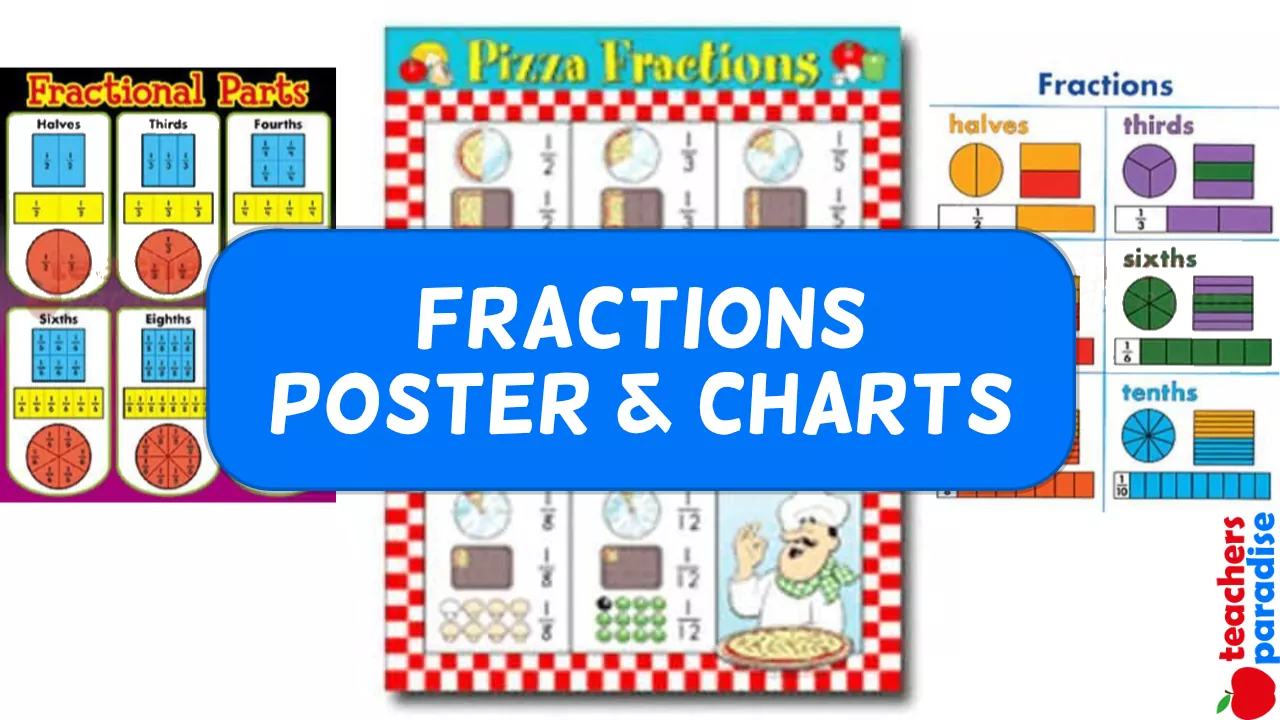
Here are some of the ways teachers can effectively use a fractions poster and chart in their classroom:
View all fractions and posters charts here
The Most Popular Fraction Poster at TeachersParadise
- Introduction to Fractions: Begin by introducing the concept of fractions using concrete examples. Show students different objects (like pizza slices, chocolate bars, etc.) and explain how fractions represent parts of a whole. The chart illustrates these examples and shows how fractions are written visually.
- Visual Representation: A fractions chart is a visual aid that displays fractions clearly and organized. Teachers can use the chart to demonstrate different fractions, compare their sizes, and identify equivalent fractions. This helps students grasp the relationships between different fractions.
- Equivalent Fractions: Show students how to find equivalent fractions using the chart. Highlight that multiplying or dividing the numerator and the denominator by the same number results in an equivalent fraction. Use the chart to demonstrate this process.
- Comparing Fractions: The poster/chart can be used to compare fractions. Teachers can help students understand the concepts of greater than, less than, and equal to by using the chart to compare the sizes of fractions visually.
- Adding and Subtracting Fractions: The chart can be instrumental when teaching addition and subtraction of fractions. Teachers can show students how to find a common denominator and perform the operations using the visual representation on the chart.
- Multiplying and Dividing Fractions: The fraction poster/chart can also help teach multiplication and division of fractions. Teachers can demonstrate how to multiply fractions by multiplying the numerators and denominators and dividing fractions by taking the reciprocal of the second fraction and then multiplying.
- Interactive Activities: Create interactive activities where students work with the chart themselves. Provide fraction cards that students can place on the chart to create different fractions and understand their relationships.
- Hands-on Manipulatives: In addition to the chart, use hands-on manipulatives like fraction tiles, circles, or bars. These physical tools can be used alongside the chart to provide a tactile understanding of fractions.
- Real-world Applications: Connect fractions to real-world applications. Use the chart to show how fractions are used in measurements, cooking, and everyday scenarios. This helps students see the practical relevance of the concept.
- Assessment: Use the chart for assessment purposes. Provide students with fraction-related questions and ask them to use the chart to solve problems, compare fractions, or demonstrate their understanding.
- Differentiation: The chart can be a helpful tool for differentiated instruction. Students who grasp the concept quickly can use the chart to explore more complex fractions or problems, while others can use it as a support to build their understanding.
More Fractions charts & Poster
Visual aids like a fractions poster and chart are just some tools in a teacher’s toolkit. It’s essential to use various teaching methods and resources to cater to different learning styles and abilities within the classroom.
